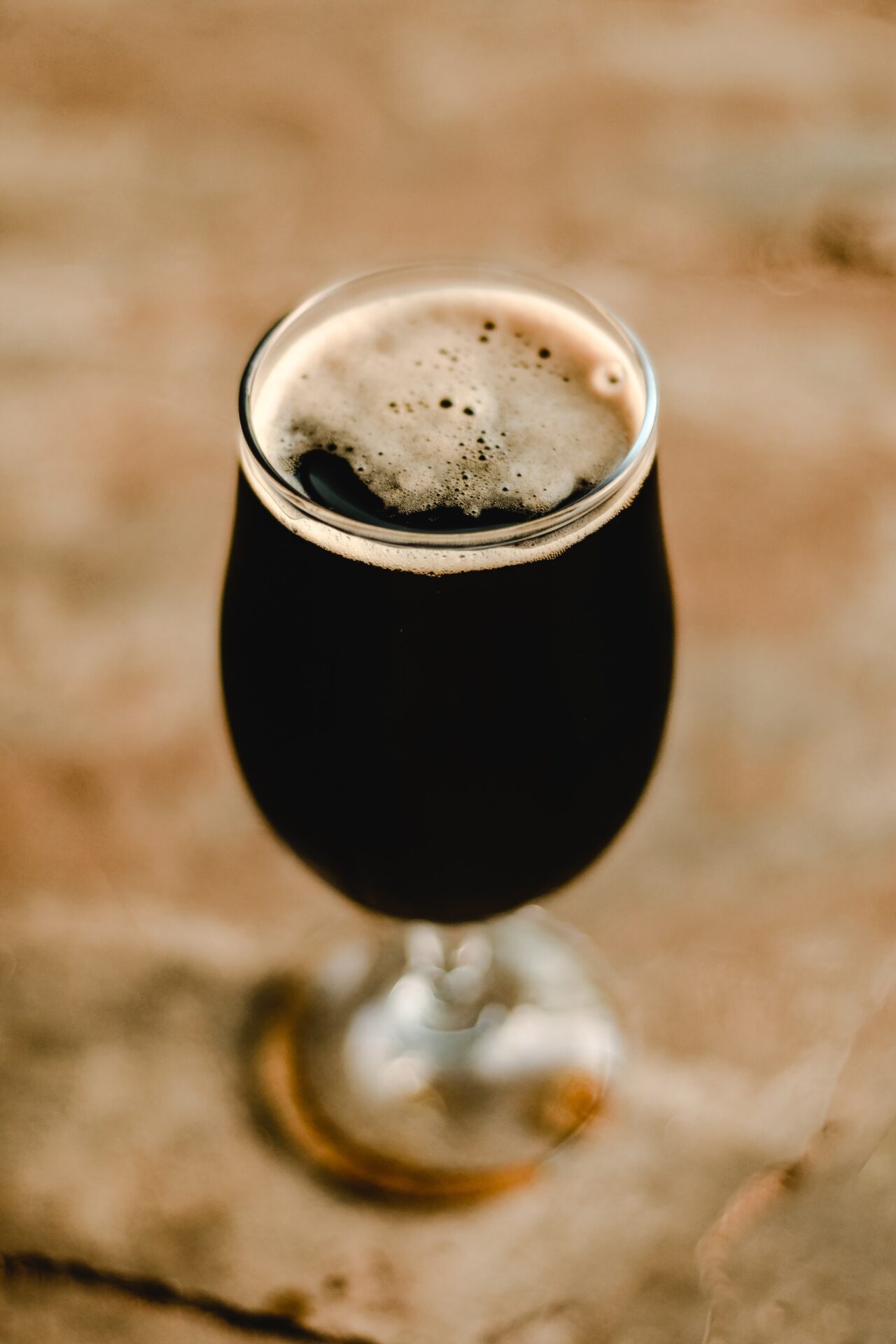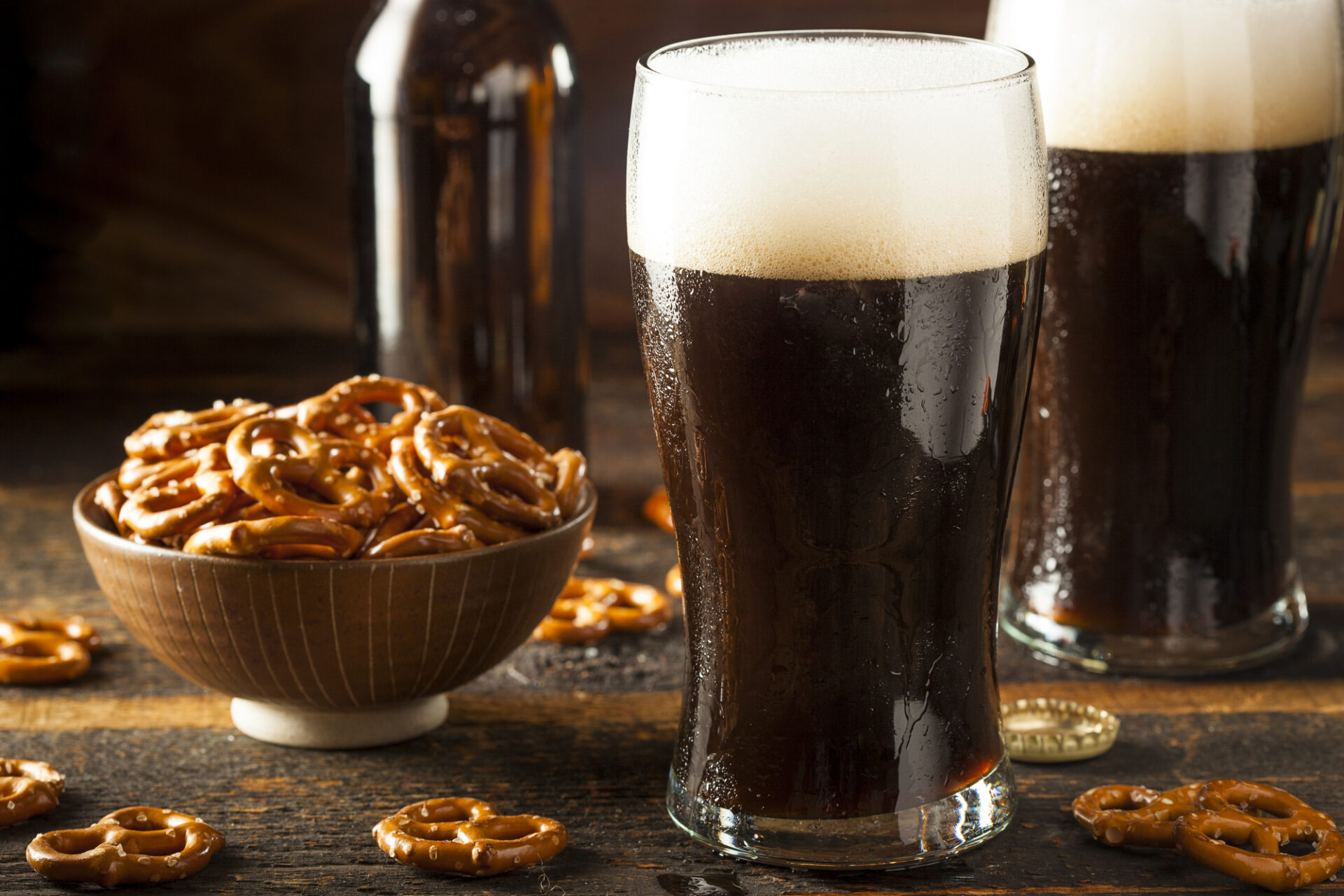Oatmeal stouts are a very popular variant of the stout beers which were first introduced in late 19th Century England and are famous with beer aficionados for their smooth, creamy, almost silky texture.
With a sweeter flavor than most English Stouts or a Dry Irish Stout, in my humble opinion, an oatmeal stout is the easiest of stouts to drink.
Think of oatmeal and you are taken back to the days of your youth with that nourishing bowl of breakfast oats your mom used to make in the cold winter mornings. It was comforting and sweet, the perfect start to a day.
But I digress, although oatmeal stout was originally marketed as a nutritional drink, since its reappearance in the 1980s, Oatmeal stouts are better known for being smooth, easy-to-drink dark beers than for the nutritional effects of the content of oats.
Homebrewers have long sought to brew their own oatmeal stouts even since the late 70s when it was noticed as a style in the famous beer critic, Michael Jackson’s book The World Guide to Beer.
Even the well-known nomadic brewer Mikkeller credits the start of his brewing adventure to mainly one beer, Mikkeller’s Beer Geek Breakfast.
The Oatmeal Stout Style

Oatmeal stouts don’t particularly taste like oatmeal, instead, the addition of oats to a stout gives that silky, rich, and creamy character with their high content of protein, lipids, and gums.
Some early commercial examples of oatmeal stout used as little as 1% oats in their grist, although many would feel that only boosting it up to 5% to 10% oat content gives that silkiness you are looking for in an oatmeal stout.
Adding too many oats though can give the beer more of an oily feel and often impart an astringent flavor, especially if the oat content goes over 30%.
The BJCP guidelines for oatmeal stout describe it as a variant of a sweet stout that uses oatmeal for the body and complexity of flavor rather than the lactose found in milk stouts.
A roasted grain aroma should be mixed with a slight sweetness and very little fruitiness or diacetyl content. Hops are used sparingly, with the hop aroma and flavor being lower than most other stouts. Instead, it may have a slight oatmeal aroma that lingers in the background.
The color will normally be a medium to dark brown or even jet black in some cases (SRM 22 – 40) and, with an original Gravity range of 1.048 – 1.065, the average ABV of an oatmeal stout is 4.2% – 5.9%.
Bitterness tends to be low with a 25 – 40 IBU range although there are exceptions to this especially with Imperial Oatmeal stouts, which also bump up the alcohol content often to 8% or higher.
One of the beauties of an oatmeal stout is you can literally add any other ingredients you want that you feel would compliment that oatmeal.
Many commercial brewers add roasted coffee for a rich coffee flavor, different types of bitter or milk chocolate, and maple syrup. One brewer has even been known to add bacon to the brew. (We wouldn’t recommend you do this at home until you have more experience brewing an oatmeal stout. Bacon can be a tricky flavor to balance!)
Tips for Brewing Your Own Oatmeal Stout

Although we’ll feature a couple of recipes for brewing your own oatmeal stout below, here are a few important tips to ensure the process goes as smoothly as that silky, smooth texture you are looking for.
The Grain Bill
The main deciding factor that’s different in an oatmeal stout compared to other types of stout is the oats in beer; which type of oats and how much to use.
The base malt will normally be made up of British or possibly American pale malts although blends of specialty malts can also be added. The pale malts will normally make up 60 – 80% of the grain bill.
Typically, to be true to the style, a brewer would use English two-row pale ale malt with chocolate flavors coming from the use of chocolate malt, a roasted taste from roasted barley, nutty flavors from the roasted malts, and hints of caramel from crystal malts or caramel malts.
The oats impart that silky mouthfeel and contribute to the body of the stout. Black patent malt can also be added if you want a deeper black color to the stout.
Oats need to be mashed with malted grains and roasted malts otherwise none of the starches in the oats will be converted into sugars during fermentation and you will be left with a more grainy flavor.
The starches are not available to the enzymes in the beer until the oats are gelatinized or cooked. With flaked oats or rolled oats that you can find in your local Homebrew store, this gelatinization has already been done for you.
If you should buy oats that have not gone through the cooking process, such as steel-cut oats, don’t worry too much, just pretend you are making a bowl of oatmeal for breakfast and boil in 2 gallons of water per pound of oats before adding to the mash.
Some debate arises over whether you should toast your oats. Many, myself included, would argue toasting the oats increases the flavor they add to the stout, but it can be a tricky process to get right.
Whatever you do, don’t burn the oats. I’ve seen many a batch of beer ruined by oats that have been over-roasted. If in doubt, add the oats au natural until you get the flavors you want.
For quantity, you can add up to 30% of the grain bill in oats before you will get any bitterness and a more astringent taste from the oats. Most brewers would recommend between 3-12% to avoid any problems with the sparring, which can arise from too many beta-glucans that can make the oatmeal mash too gummy.
Mashing and Sparging Your Oatmeal Stout
As long as you’re using less than 10% oats you should be able to use a single-step infusion mash without running into too many sparge problems. No matter what, the sparge is going to be a long process due to the innate gumminess of the beta-glucans and fat content in the oats. Just imagine trying to spare through a bowl of sticky oatmeal.
If using more than 10% oats, you could also add at least a pound of rice hulls to the mash vessel to thin out that glutinous gummy consistency. Another method would be to impart a two-step mash with a 20-minute rest and hold the mash between 98ºF and 113ºF to help break down the beta-glucan content.
After the mash time is up, you will want to as quickly as possible raise the temperature to above 168ºF to stop any enzyme activity and keep the starches and glucans liquified. Sparge to the boil volume with water at 170ºF.
Hops
Hops should be used for light to moderate bittering effect and aroma. English hop variants such as Fuggle, Styrian Goldings, and East Kent Goldings should be considered if brewing a traditional English-style oatmeal stout. Fuggles can be used for bittering while the East Kent Goldings will impart flavor and aroma.
American interpretations of oatmeal stouts often up the bitterness with the use of such American varietals as Cascade, Columbus, Northern Brewer, or Williamette hops working well for sweet stouts.
Yeast
Traditionally, an English-style ale yeast should be used for an oatmeal stout. Which variety you choose will depend on the sort of mouthfeel and body you want from the finished stout.
For a tasty stout, use an English ale yeast with a lower ester production like Wyeast 1318 (London), White Labs WLP002 (English Ale), or Danstar Winsor dry yeast. If you prefer a dry stout, try using an Irish Ale yeast.
A Classic Oatmeal Stout Recipe for Beginners
Ideal for newcomers to homebrewing, this simple recipe uses a combination of dry malt extract and all-grains to produce 5 gallons of stout.
Courtesy of our friends at Fermenting for Foodies comes this simple recipe ideal for those new to homebrewing. This could be a base for experimenting with the other flavors of an oatmeal stout.
When adding to the secondary ferment, you could add extra flavors such as coffee, chocolate, dried fruits, vanilla, or ground spices.
Ingredients
- 5.2 lbs light malt extract
- 1.2 lbs Pale 2-row malt
- 0.8 lbs flaked oats
- 0.4 lbs wheat malt
- 0.6 lbs roasted barley
- 0.2 lbs chocolate malt – US
- 0.6 lbs crystal malt
- 1 oz Northern Brewer Hops
- Wyeast #1804 Irish ale yeast brewing yeast
- 3/4 cup of dextrose for priming the carbonation
Directions
- In a large pot, heat 4 gallons of water to 160ºF and then pour over the malts and grains in your mash tun and allow them to steep for 50 minutes.
- Drain the wort and rinse the grains with another gallon of water at about 158ºF. There should now be about 5 gallons of liquid in your brewing pot.
- Add the light malt extract to the pot and bring it to a boil.
- Once the wort is boiling, add the hops, cover, and then boil for 60 minutes.
- Once the 60 minutes are up, cool the liquid to 68ºF before pitching the yeast. (Always check the packaging of the yeast for the recommended pitching temperatures.)
- Leave to ferment for 1 week at approximately 66ºF.
- After 7 days, rack the brew to clean jugs for secondary fermentation. At this stage, you can experiment with adding other flavors such as fruit, coffee, or spices.
- Ferment for a further 7 days before bottling.
- Mix the dextrose into the stout before bottling. Try to avoid too much air getting into the brew as you bottle it, with oats being a malted grain this could cause the beer to go stale.
- After bottling allow the beer to age or mature at room temperature avoiding any direct contact with sunshine.
- With no preservatives found in this stout, it’s recommended that it should be drunk within 3 months of bottling. Hopefully, it will be so delicious that shouldn’t be a problem!
A Double Chocolate All-Grain Oatmeal Stout Recipe
If you like your flavors of stout to be heavy in chocolate, this super dark stout is for you! Very heavy, very dark, and very smooth, it has a slightly higher ABV at 6.8%.
But the stout is so smooth and chocolate tasting, you will hardly notice that higher alcohol content. This would make for a good breakfast beer as long as you haven’t got too much else to do all day.
Ingredients
- 10 lbs Pale Ale malt
- 1.5 lbs Chocolate Malt
- 1 lb Crystal Malt 40L
- 2 lbs Flaked oats
- 2 oz East Kent Golding pellets
- 0.5 oz Northern Brewer pellets
- 1 tbsp Irish Moss
- 1 lb rice hulls
- Wyeast 1084 Irish Ale yeast
Directions
- Add the grains and oats to the mash tun with the rice hulls to prevent a stuck runoff. Add 4.5 gallons of water and heat the mash to 158ºF before mashing for 90 minutes.
- Drain into a brew pot and sparge with 3.25 gallons of water at 180ºF to stop any enzyme activity and keep the beta-glucans of the oats in a liquid state.
- Bring to a boil adding in 1.0 oz of the Kent Golding pellets and the 0.5 oz Northern Brewer hop pellets.
- After 45 minutes of the boil add in the Irish moss and at 50 minutes add the remaining 1 oz of the Kent Goldings pellets.
- End the boil after 60 minutes. Cover and allow to ferment at approximately 68ºF for 7 days.
- Rack into a clean fermentation vessel after 7 days and allow a secondary fermentation of another 7 days at approximately 66ºF to 68ºF. At this stage, you could add 2 tbsp of chopped cocoa nibs or cocoa powder for a more intense chocolate flavor.
- After secondary fermentation is complete, mix 3/4 cup of dextrose with the stout for carbonation before bottling.
- Leave to age in a dark and slightly warm room for one month before cracking open your first bottle.
- The slight oil content of the hops should act as a preservative and this beer could be kept for up to 6 months. However, I have never made a batch of this beer that lasts me much longer than a month!
Brew Your Own Oatmeal Stout – The Takeaway
Hopefully, we have whetted your appetite for oatmeal stouts. The silky smoothness the oats impart to these deliciously sweet yet dark beers makes them one of the most drinkable stouts there is.
The addition of oatmeal to the name always makes me think of breakfast and most Homebrew oatmeal stouts would make an ideal breakfast or brunch beer. Washing down stacks of pancakes & maple syrup with a chocolatey, coffee-like oatmeal stout is the perfect start to a day.
Have you ever tried brewing an oatmeal stout? If you have a favorite recipe we would love to hear from you!

